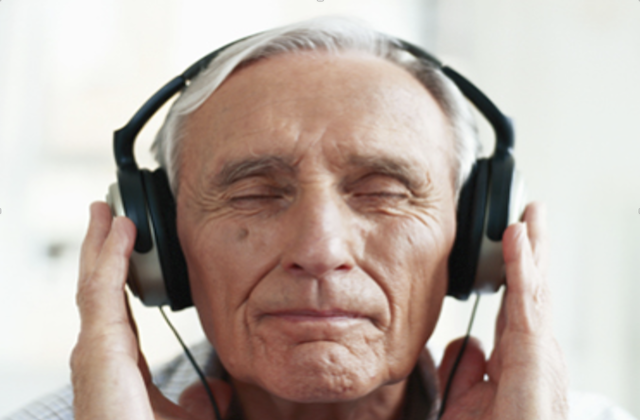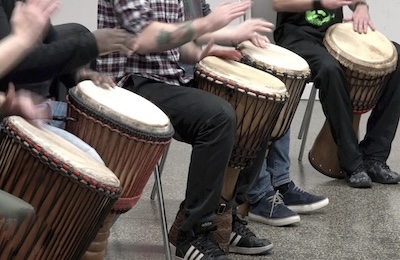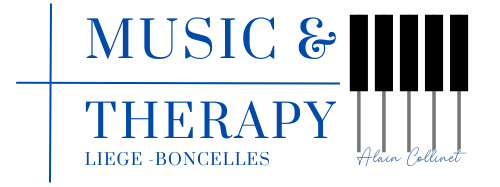Academic music therapy
Academic music therapy
This is music therapy as taught and practiced in universities.
Music therapy
Music Therapy: A Therapeutic Approach Using Music and Its Components to Enhance Physical, Mental, and Emotional Well-being
Music therapy is a recognized healthcare approach that utilizes music and its various elements to promote physical,mental, and emotional well-being. During a music therapy session, the music therapist employs a diverse range of techniques, which stem from two primary approaches: receptive music therapy and active music therapy. However,practitioners often utilize a combination or blend of these techniques. Music therapists have a vast repertoire of techniques at their disposal, drawing inspiration from the five international music therapy models and techniques derived from ethnomusicology.
Receptive Music Therapy

Receptive Music Therapy: A Therapeutic Approach Based on Active Listening
Receptive music therapy encompasses a range of therapeutic methods that utilize active listening to music and sounds to elicit associations and cognitive constructions, as well as psycho-affective and psychophysiological elaborations. In essence, these are listening techniques tailored to the needs of individual patients. There are dozens of receptive techniques available.
Foundation in Psychoaffective and Psychophysiological Effects
Receptive music therapy techniques are grounded in the psychoaffective and psychophysiological effects of music. Music has a profound impact on our emotions, thoughts, and physical responses. Receptive music therapy capitalizes on this inherent power of music to facilitate therapeutic change.
Applications in Individual and Group Settings
Receptive music therapy techniques can be employed in both individual and group settings. Individual sessions allow for personalized attention and tailored interventions, while group sessions foster social interaction, group dynamics, and a sense of community.
Active Music Therapy

Active Music Therapy: Unleashing Expression, Communication, and Personal Growth
Active music therapy encompasses a range of therapeutic methods that utilize music and its various components (notes,melody, rhythm, timbre, tempo, volume, etc.) as a means of expression, communication, and personal development. It provides a unique framework for therapeutic work centered on sound and music production, improvisation, and creativity.
Core Principles of Active Music Therapy:
Self-Expression and Communication: Music serves as a powerful tool for self-expression, allowing individuals to communicate their emotions, thoughts, and experiences in a non-verbal manner.
Creativity and Personal Growth: Active music therapy fosters creativity, personal growth, and the exploration of one’s identity through the medium of music.
Intrinsic Musical Elements: The therapeutic process utilizes the inherent elements of music, such as intensity,rhythm, and sounds, to facilitate expression, communication, connection, and identity formation.
Non-Verbal Expression: Initially non-verbal in nature, active music therapy encourages the exploration of abandoned projects, the desire for life, and the expression of inner distress in a more subtle form.
Verbalization and Integration: Verbalization often concludes the use of active techniques, allowing for integration and reflection on the therapeutic experience.
Combined and Associated Techniques: Expanding the Horizons of Music Therapy

Combined and Associated Techniques: Bridging Music Therapy with Other Expressive and Therapeutic Approaches
Combined and associated techniques in music therapy extend the therapeutic scope by integrating music therapy with other expressive art forms or therapeutic approaches. This fusion of modalities creates a dynamic and multifaceted therapeutic experience, catering to diverse client needs and preferences.
Core Principles of Combined and Associated Techniques:
Interdisciplinary Integration: These techniques bridge the gap between music therapy and other expressive art forms or therapeutic approaches, fostering a holistic and comprehensive approach to well-being.
Enhanced Therapeutic Potential: The integration of diverse modalities amplifies the therapeutic potential of music therapy, addressing a broader range of concerns.
Tailored Interventions: Combined and associated techniques allow for personalized interventions that align with individual needs and preferences.
Creative Expression and Exploration: These techniques encourage creative expression and exploration,promoting personal growth and self-discovery.
Therapeutic Synergy: The fusion of modalities creates a synergistic effect, enhancing the therapeutic impact of interventions.
Applications of Combined and Associated Techniques:
Addressing Complex Needs: Combined and associated techniques are particularly well-suited for addressing complex and multifaceted needs, such as those arising from trauma, chronic pain, or developmental disabilities.
Promoting Holistic Well-being: These techniques support holistic well-being by addressing physical, mental,emotional, and social aspects of health.
Enhancing Cultural Sensitivity: The incorporation of diverse art forms and therapeutic approaches promotes cultural sensitivity and responsiveness to diverse populations.
Expanding Therapeutic Horizons: Combined and associated techniques expand the horizons of music therapy,allowing for the creation of innovative and effective interventions.
Reminder of Indications
My Areas of Expertise in Music Therapy
Music therapy has a wide range of applications, and I have experience working with clients in a variety of settings. My primary areas of focus include:
Medical Settings:
- Pain Management (Algology)
- Sleep Disorders
- Alzheimer’s/Parkinson’s Disease
- Palliative Care
- Perinatal Care
- Rehabilitation (motor, language, stroke, etc.)
Psychotherapy Settings:
- Stress, Anxiety, and Panic Disorders
- Depression and Mood Disorders
- Borderline Personality Disorder
Psychopedagogical Settings:
- Learning Difficulties and Disabilities
- Social and Emotional Challenges
Psychosocial Settings:
- Social Maladjustment and Delinquency
- Carceral Settings
- Criminal Justice System
Research:
- Music Therapy Research
Current Focus:
Currently, I am primarily focusing on providing music therapy services in medical and psychotherapeutic settings. I have a network of experienced music therapists who collaborate with me to address the needs of clients in other areas.
Music therapist is a healthcare professional
Once the therapist has a thorough understanding of your situation, they will select one or more techniques tailored to your specific needs.
